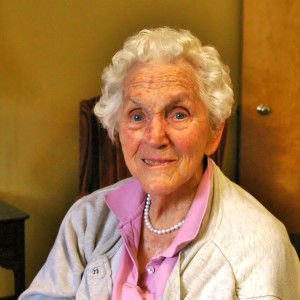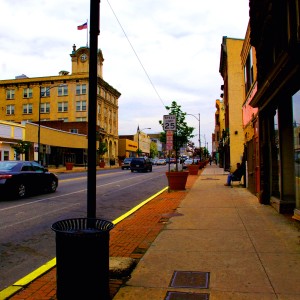Longtime Coatesville resident updates 1911 poem to express her love for city
By Kyle Carrozza, Staff Writer, The Times

Longtime Coatesville resident Doris S. Williams wrote an ode to Coatesville, telling about the pride she has in the city and her hopes for its future.
Community means identity. In Coatesville, we share spaces,
both physical—sidewalks, schools, lines at the grocery store—and less tangible but just as real—the struggle to make ends meet, the shared experience of Lukens layoffs, our resilient sense of Coatesville Pride.
The conditions we share shape us. Even the ones that do not affect us firsthand affect our coworkers, family, and friends—conditions larger than ourselves that we often cannot control, like growing up broke or losing your home to some psychopath’s obsession with fire.
Coatesville residents are all too familiar with such trauma and the way it can dehumanize a person. Children become percentages. Families’ homes become damage costs.
But behind all the headlines and statistics, there are people.
In her sequel to the 1911 poem “Happy Coatesville,” Doris S. Williams reflects on that fact, writing an ode to the city and finding beauty in the ugliness.
It’s important to have a sense of community in times of suffering. Community can provide understanding of what we go through, of ourselves, and of those around us. At the very least, community can provide a shoulder to cry on.
Art reminds us of that sense of community. Whether it’s the mural painted by the students of the Bridge Academy, the rapper Flowz Dunbar shouting out Coatesville in his songs, or a poem written by a now 91-year old lady who has seen the city at its best and worst, art humanizes, connects neighbors, makes strong bonds from the things that would destroy us.
* * *
Happy Coatesville
by William H Ridgway
July 26, 1911
Did you ever hear of Coatesville
Where there’s lots of dirt and smoke
And noise and push–and money,
And only fools go broke;
Where the sky above the valley
Spreads its very bluest blue,
And the big white clouds each summer
Come to see how well we do?
Did you ever hear of Coatesville
Where there’s lots of dirt and smoke,
Pretty home nests on the hillside
From Main Street up to Oak.
Where every honest mill man
For his work gets rich reward,
And builds himself a mansion
And lives like any lord?
Did you ever hear of Coatesville
Where there’s lots of dirt and smoke,
Where Sunday Schools are hummin’
With happy Christian folk;
Where the men in Bible classes
By the hundreds find a rest
And where Sunday is the “Lord’s day”,
Of all the days the best?
Did you ever hear of Coatesville
Where there’s lots of dirt and smoke,
Where Christian men all prosper
And poverty’s a joke;
Where every day’s a pleasure
To happy men and strong,
For the Father keeps the mill-man
And fills his life with song.
* * *
Workers pour out of the haze and heat of the steel mill into the haze and heat of dusty of Coatesville in August. The smoke wafting over the city means the mills are producing. With the small steel town beginning to boom in Industrial Revolution America, it’s a good day to live in Coatesville. Just a few weeks before, William H Ridgway wrote a poem praising his city. But in the next 24 hours, all that changed.
In 1911, Coatesville was growing. While it was never a major city, the town had two steel mills prospering. Between 1900 and 1910, the city’s population doubled as European immigrants and black people from the South came to find work at the mills.
One stretch of downtown was known as “White Way”. Residents bragged that the area was better lit that Broadway. Every year, the city held the Harvest Home Festival, a weeklong celebration that included music, car races, and a tug-of-war between the two fire companies.
It was on the last day of this celebration that Zachariah Walker found himself drunk in the woods of East Fallowfield.
Walker was a black man originally from Virginia. Like so many others, he came north to looking for opportunity and made a living working for the Worth Brothers Steel Company, at the time, even larger than Lukens. But along with prosperity, the success of the steel industry brought racial tension.
“Before the World War, Lukens was big time. It brought in black workers from the South, and the town was not very hospitable toward those black workers,” said former Coatesville Area Senior High teacher Ross Kershey, who is known by many Coatesville alumni for his “History of Coatesville” presentation.
As the enclaves of the immigrants and black workers swelled, so did the strain on their relationships with the old residents.
The city’s sense of community did not include these newcomers.
As Walker stumbled through the woods on that summer day, Edgar Rice, a well-known and respected police officer came to investigate reports that Walker had fired shots.
“Walker stuck a gun in his belt because the town wasn’t too friendly,” said Kershey. “What happened in the woods, no one knows.”
The struggle between the two men left the police officer dead and Walker hiding in the woods. When the mob found him the next day, Walker shot himself in the head, attempting suicide. He survived and was arrested and taken to the hospital in police custody. But the crowd outside was not satisfied with the result. As the evening went on, people flooded the streets of Coatesville, demanding immediate justice.
Still chained to his hospital bed, Walker was carried by the mob into the woods. Nearly 2,000 watched or participated in the burning of Zachariah Walker. Many took pictures or body parts as mementos. In the coming weeks 15 people were brought to trial for the lynching. No one was convicted.
The incident garnered national attention. Newspapers across the country recounted the events and covered the ensuing trial. Famous author John Jay Chapman wrote an essay for Harper’s Weekly. WEB DuBois condemned the city in the NAACP’s The Crisis Magazine. Rand McNally removed Coatesville from its maps.
In light of the tragedy that took place mere weeks after Ridgway’s poem, his lines glorifying the city seem like an eerie elegy for the dream of Coatesville, some ideal that residents cannot commemorate without recalling the terrible episode that shook the foundation of American liberty.
The incident further divided black and white people in a city where race relations were crucial. It showed that the horrific prejudices of the US were not just reserved for the South. A cloud loomed over the town after the Zachariah Walker’s lynching, one wholly different from the clouds of prosperity over the steel mill. Coatesville was a community divided.
* * *
 Though January snow lies on the ground, the city is on fire. Smoke curls into the winter night.
Though January snow lies on the ground, the city is on fire. Smoke curls into the winter night.
Coatesville is once again making national headlines, this time for the arsons plaguing the city, including one that burned down an entire city block.
People pack bags and leave them near their doors, ready to leave immediately. People sleep fully dressed in case they have to run out into the cold night.
The fires have become not just isolated incidents but a part of the city’s consciousness. Eviscerated remains half-stand as daily reminders.
To make matters worse, the arsons just the direst of a slew of problems facing the city. Lukens Steel is a shell of its former self, in slow decline for decades.
It’s the story of countless Rust Belt towns in the Northeast, outsourcing leading to layoffs, layoffs to loss of income for cities and the families who live in them.
The school district and municipality have seen their share of financial struggles, compounded by the worldwide economic downturn. Revitalization projects have been planned and then abandoned for the same reason. It seems no matter how hard Coatesville tries, it cannot get ahead.
But somehow, maybe because of this strange thing we know as Coatesville Pride, people stay hopeful. Whether it’s through the football team, the teachers that go out of their way on a daily basis to meet the needs of their students, or just the camaraderie of neighbors at a cookout, people still find things to love about the city.
This passion for her community pushed Doris S. Williams to write a poem in 2010. The poem is an updated version of Ridgway’s “Happy Coatesville”.
“The sky above the valley / still shines it’s [sic] bluest blue,” she writes.
Williams, born in Coatesville in 1921, saw Coatesville while it was bustling in the 1940’s up through the decline in the later parts of the century. In an interview, she recalled being able to get anything you needed between the two bridges. She remembered dances and movie theaters when she was growing up.
“We all love Coatesville and speak well about it, and we have good memories,” she said.
Williams found Ridgway’s piece in her family’s Bible and wanted people to see the positives in a city too often impacted by negative events.
“The poem was yellow from age. I thought that a lot of people would be interested in seeing that, especially when Coatesville was getting such a bad reputation,” said Williams.
Through churches and a love for the city, she thinks that Coatesville can thrive. She has faith in current government and the people. A sense of community is a large part in helping the city move forward. She hopes that her poem will feed into that unification.
“Our devotion to the city—a lot of them have it, but they don’t have a chance to express it,” she said.
Living in a city, especially one as economically and racially diverse as Coatesville means finding the bonds that link us through our differences. Citizens of the Steel City have a shared history, one riddled with ugly parts but a shared history nonetheless. While no one ever wants to see tragedy impact their home, the adversity can connect people. There are events that have impacted us that no one but our neighbors fully understand.
When she was little, Williams, a Scott graduate, attended a segregated school. By sixth grade, the schools were integrated. Doris said that integration allowed her a sense of community. Having a mix of races allows people to unite. By looking at the past, at the times when people were separated, Coatesville can unite, find community in a cloud of smoke and walk out of it together.
Sequel to “Happy Coatesville” 1911
by Doris S. Williams
November 2010
Let me tell you about Coatesville
Where there’s no more dirt and smoke
From the steel mill that gave livelihoods
To most of Coatesville’s folk
The sky above the valley
Still shines it’s bluest blue
Though Lukens Steel no longer thrives
Employment for most was through
I’ll tell you more of Coatesville
Where there’s no more dirt and smoke.
Pretty homes still nest on the hillside
From Main Street up to Oak
Every holiday’s remembered
Our city is known to glow
Especially at Christmas
The love for our Lord does show
Yes there’s lots to tell of Coatesville
And the people who’ve survived
Much happiness is quite evident
Our city’s quite alive
We boast of 45 churches
Whose doors are always open
And someday they’ll be full again
To hear God’s promises spoken
So don’t give up on Coatesville
We’re moving right along
Enthusiasm flourishes
Discouragement be gone!
Leadership’s been much improved
Twas Coatesville’s biggest need
Great plans are in the offing
Lord willing, we’ll succeed.






